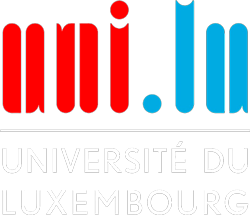Luxembourg in Transition
The environmental emergency is global. Governments around the world are looking for ways to tackle global warming. The Grand Duchy of Luxembourg wishes to be one of the pioneers by adopting a territorial strategy based on citizen consensus. But where should it start to find the key to reversing the activities that contribute to climate change while limiting the impact on the quality of life of citizens and on biodiversity? Such a change requires bold ideas. This is the reason why the Ministry of Energy and Regional Planning launches an urban-architectural and landscape consultation: “Luxembourg in Transition - Territorial visions for the carbon-free and resilient future of the Luxembourg functional region”.
A team led by the “Geography and Spatial Planning” department of the Faculty of Humanities, Education and Social Sciences (FHSE) is one of the 10 teams selected by the ministry. This national project corresponds to one of the three pillars of the University of Luxembourg: sustainable development. This is why the researchers decided to create a multidisciplinary team that brings together researchers and designers who will provide prospects for a socio-ecological transition in Luxembourg.
The consortium presented by the FHSE is made up of researchers in human and social sciences, but also of engineers from the Faculty of Science, Technology and Medicine (FSTM). Many external partners also joined the initiative. The researchers work closely with the Luxembourg Institute of Science and Technology (LIST), the Centre for Ecological Learning (CELL), the Institute for Organic Agriculture and Agrarian Culture (IBLA) and finally the Office for Landscape Morphology (OLM).
Post-growth society
Facing other international candidates, the main advantage of the team lies in its knowledge of the field. They can count on their previous experience in developing such project abroad. Some of them participated in a similar mission in Geneva. Moreover, the team knows Luxembourg and the Greater Region very well which is a significant advantage. The vision of architecture described by the tender is also the one defended by the faculty : an interdisciplinary field which involves humanities and environmental sciences.
To develop its project, the team led by the University relies on the idea of a post-growth society, a notion often wrongly frightening. It simply argues that technological progress is not the only solution towards a sustainable world. The researchers believe that the changes should be deeper and structural.
Around this central idea, the group suggests to develop four themes: agro-ecological transition, energy sufficiency, alternative economies and finally governance by co-management.
Involving students
At the beginning of 2021, seven of the ten teams will be selected to continue their work around “Luxembourg in Transition”. To be selected, they will have to present their working methods and evaluations. The researchers hope to contribute to the consultation for as long as possible, and fully intend to involve the students from the Master in Architecture.
Whatever happens, Luxembourg in Transition will launch a real debate on growth in Luxembourg, and the department of Geography and Spatial Planning is happy to be part of it.
photograph : © M3E / MNHA
Latest News
Following the international consultation, the University of Luxembourg has been selected to take part in the second phase of the "Luxembourg in Transition" project. Six groups will keep competing to develop solutions for a carbon neutral and resilient future for Luxembourg and the Greater Region.
The six selected teams are :
- University of Luxembourg, Luxembourg Institute of Science and Technology, Centre for Ecological Learning Luxembourg, Institut fir Biologësch Landwirtschaftan Agrarkultur, Office for Landscape Morphology.
- 2001, 51N4E, Lola, Sytematica, Transsolar SAS, Endevour, ETH Zürich, TU Kaiserslautern, Yellow Ball, Gregor Waltersdorfer, Maxime Delvaux, Office for Cities;
- AREP Ville SAS, Sorbonne Université, Taktyk, Mobil’homme, Quattrolibri;
- KCAP Architects&Planners, Arup Deutschland, Cabane Partner Urbane Strategien und Entwicklung;
- MVRDV, Goudappel Coffeng, Transsolar Inc., H+N+S, Deltares, Drift, University of Twente, ITC Faculty;
- TVK Architecte et Urbaniste, Partie Prenante, Soline Nivet Architecture, Université Gustave Eiffel, Sol & Co, Justinien Tribillon, Université Grenoble Alpes, Institut de géographie alpine, Institut national de l’économie circulaire.
